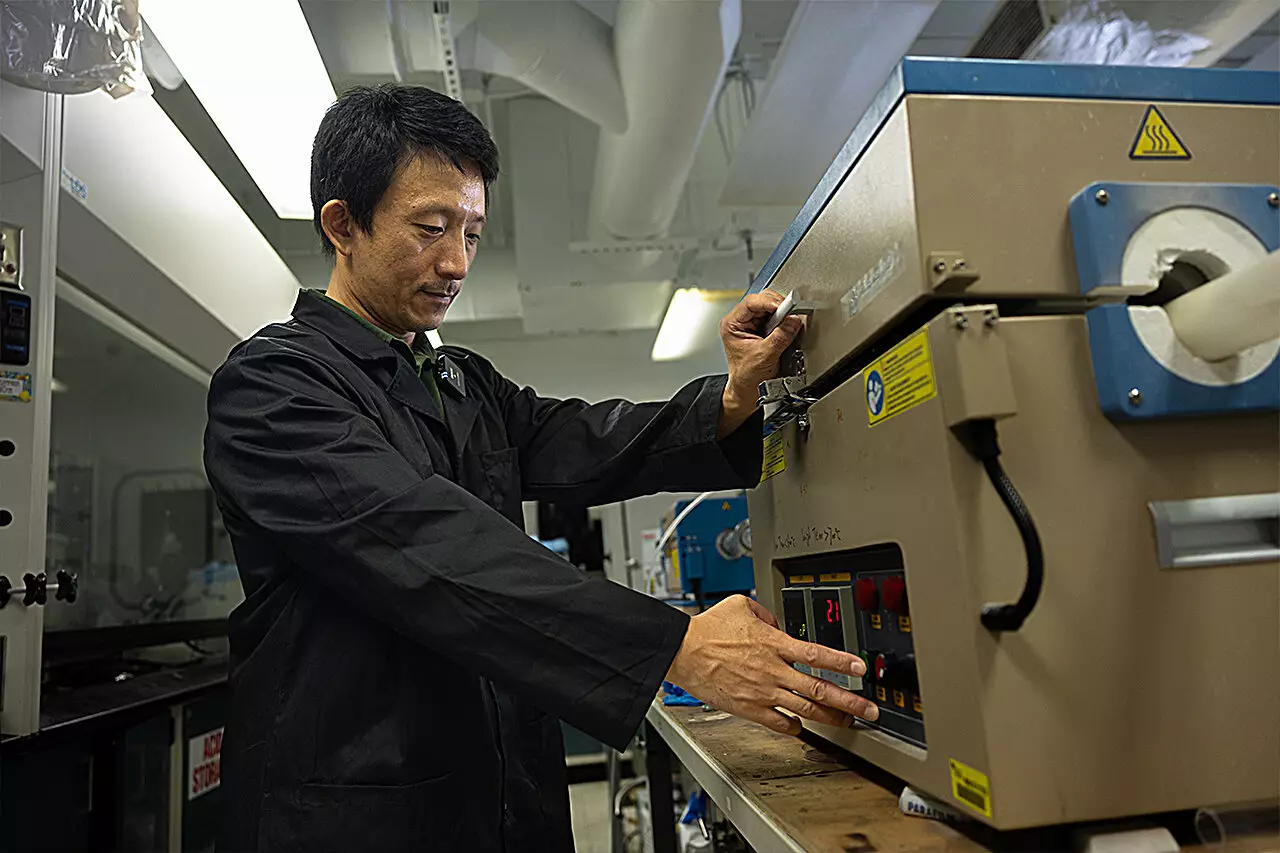The effects of climate change are becoming increasingly evident, and the scientific community is under pressure to develop effective technologies for reducing carbon dioxide emissions. A groundbreaking approach developed by researchers at the University of Central Florida (UCF) offers a glimmer of hope in combating this global crisis. The pursuit of a sustainable solution to capture and convert carbon dioxide (CO2) into useful materials is a significant step towards cutting down the excesses of greenhouse gas emissions. This article will delve into the intricacies of this new technology while exploring its potential implications for environmental sustainability and energy production.
At the helm of this innovative research is Yang Yang, an associate professor at UCF’s NanoScience Technology Center. He has designed a sophisticated device that utilizes a unique microsurface formed from a tin oxide film, integrated with a fluorine layer. By employing an electrode that bubbles through a liquid medium, Yang’s device captures gaseous carbon dioxide and selectively converts it into valuable by-products such as carbon monoxide and formic acid. These chemicals are pivotal raw materials in the manufacturing processes of various industries, highlighting the dual benefit of combating climate change while creating commercially viable products.
Yang argues that this technology is not merely about mitigating carbon emissions but is also central to producing alternative energy sources. “Our objective is to foster the development of a better technology that contributes to a cleaner world,” Yang emphasized, reflecting the ambition that accompanies this research. The potential applications for this capture technology are vast, with prospects for installation at power plants, chemical production facilities, and other major industrial sites.
One of the fascinating aspects of Yang’s innovation is its inspiration drawn from the natural world. Specifically, the scientist looked to the lotus flower, which possesses a remarkable hydrophobic surface. This property allows water droplets to bead up and scatter away, thereby preventing water buildup that could hinder the efficiency of the carbon dioxide conversion process. This mimicking of nature is profound—according to Yang, scientists have long turned to nature for inspiration, observing the efficient mechanisms animals and plants utilize for survival.
Through this biomimetic approach, Yang’s team has normalized the management of water on the microsurface of the device, a critical factor that influences the efficiency of carbon dioxide conversion. This design philosophy shows how merging scientific inquiry with natural principles can yield innovative breakthroughs in technology.
The conversion of captured carbon dioxide gas into useful chemicals happens through a process known as electrocatalytic carbon dioxide reduction. This method allows for a customizable chemical conversion process, much more flexible than traditional photosynthesis. By tweaking the reaction pathways and catalysts involved, the researchers can produce a range of valuable chemicals such as methanol, methane, and ethanol, among others.
One of the biggest challenges Yang faced during this research was managing the hydration levels around the catalytic materials. Excess water could inadvertently favor hydrogen production rather than the desired conversion of carbon dioxide. Yang noted that the team’s innovative materials effectively repel the water, optimizing the conditions for carbon dioxide reduction and ensuring that the majority of the energy input is devoted to the desired chemical reactions.
Globally, multiple strategies are being employed to combat carbon emissions, ranging from reforestation initiatives to costly carbon capture technologies. Nevertheless, Yang’s research proposes a more efficient and potentially economic alternative. Crucially, it harnesses renewable energy sources, allowing for the use of intermittent electricity derived from solar panels or wind farms. This integration of renewable resources opens avenues for substantial reductions in carbon concentrations while simultaneously generating useful chemicals.
Moreover, Yang envisions scaling up the technology to broader applications. While initial experiments have validated the fundamental concept, the next step involves creating larger prototypes that can demonstrate the technology’s capabilities on a larger scale. Such advancements would be vital for not just showcasing the efficiency of the carbon dioxide capture process but for potentially transforming the prevailing industrial practices concerning greenhouse gas emissions.
This research project not only involves a diverse group of scholars from UCF but also collaborates with prestigious institutions such as Stanford University and the University of California, Berkeley. This collaborative spirit highlights the urgency and importance of cross-institutional efforts in addressing the pressing challenge of climate change.
Yang’s team’s quest for innovations in carbon capture is a promise of hope in a world grappling with the realities of climate degradation. As they seek to carve a path toward large-scale implementation, their work serves as an inspiring beacon in the realm of renewable energy and sustainable development. With continued research and collaboration, this innovative technology may soon transition from the laboratory to practical application, promising a cleaner, greener future for generations to come.

